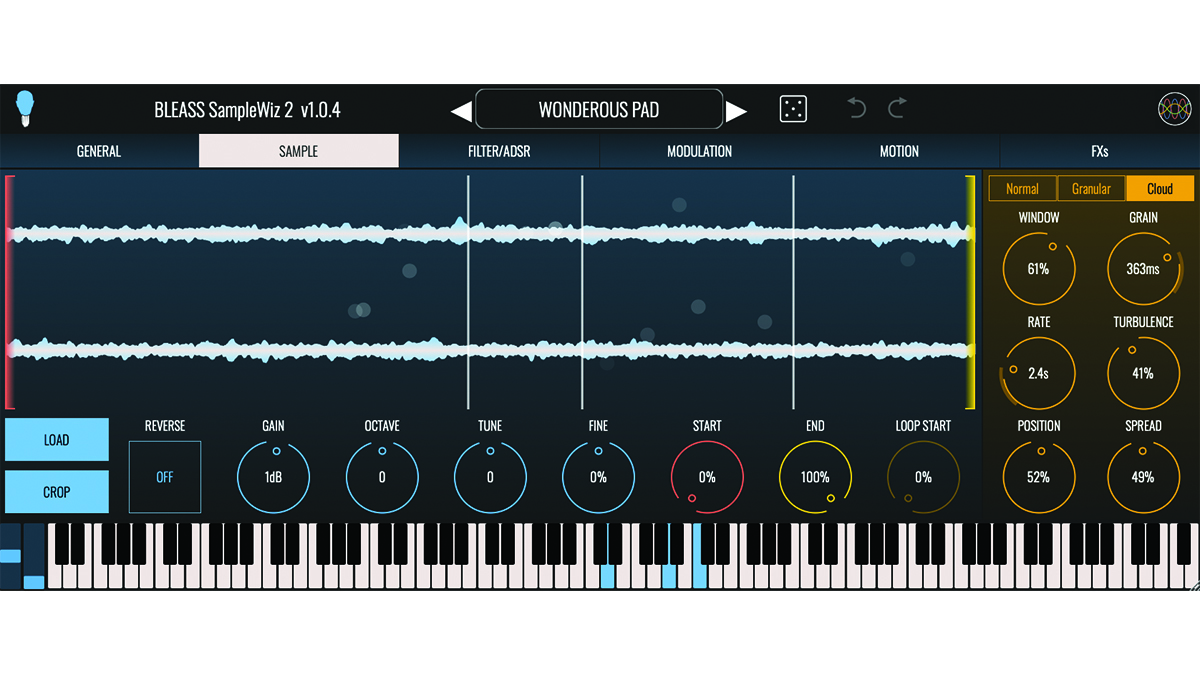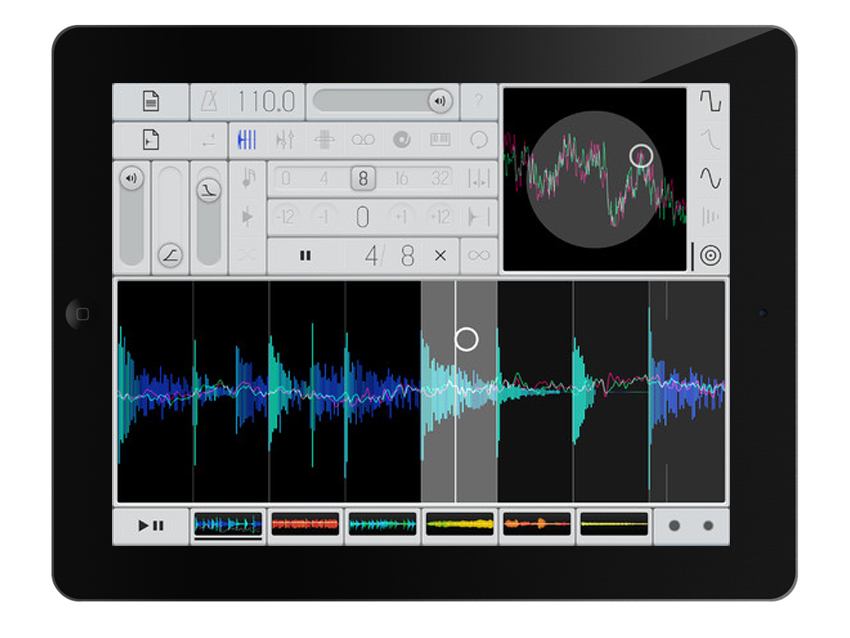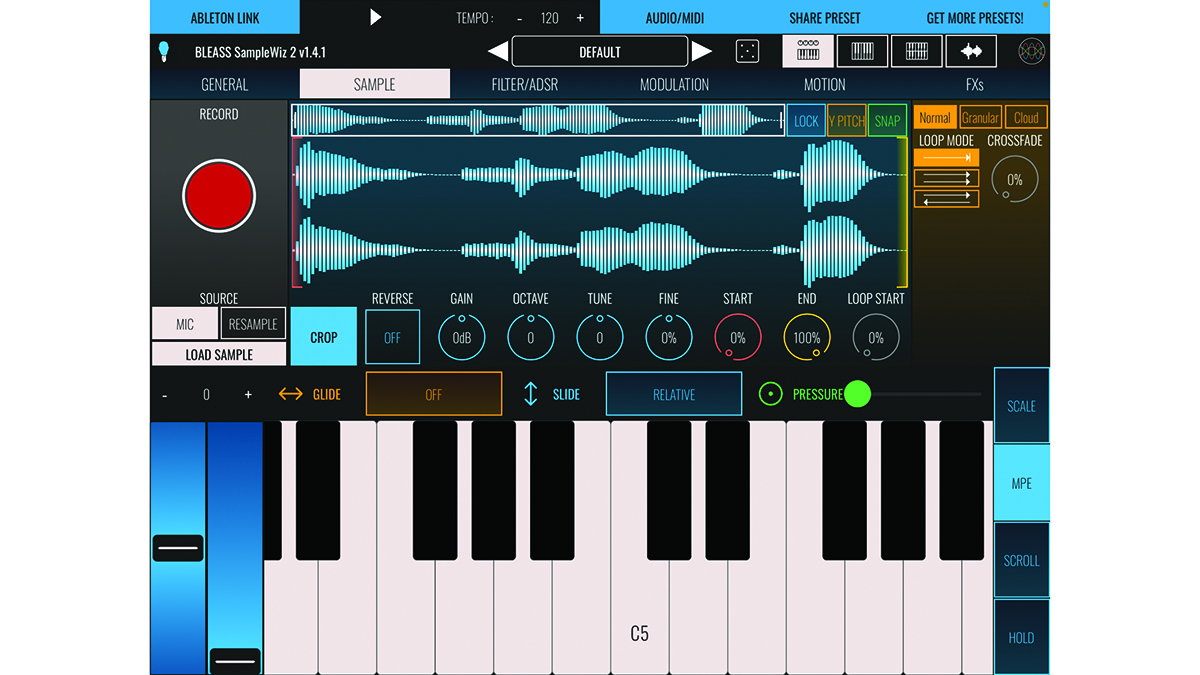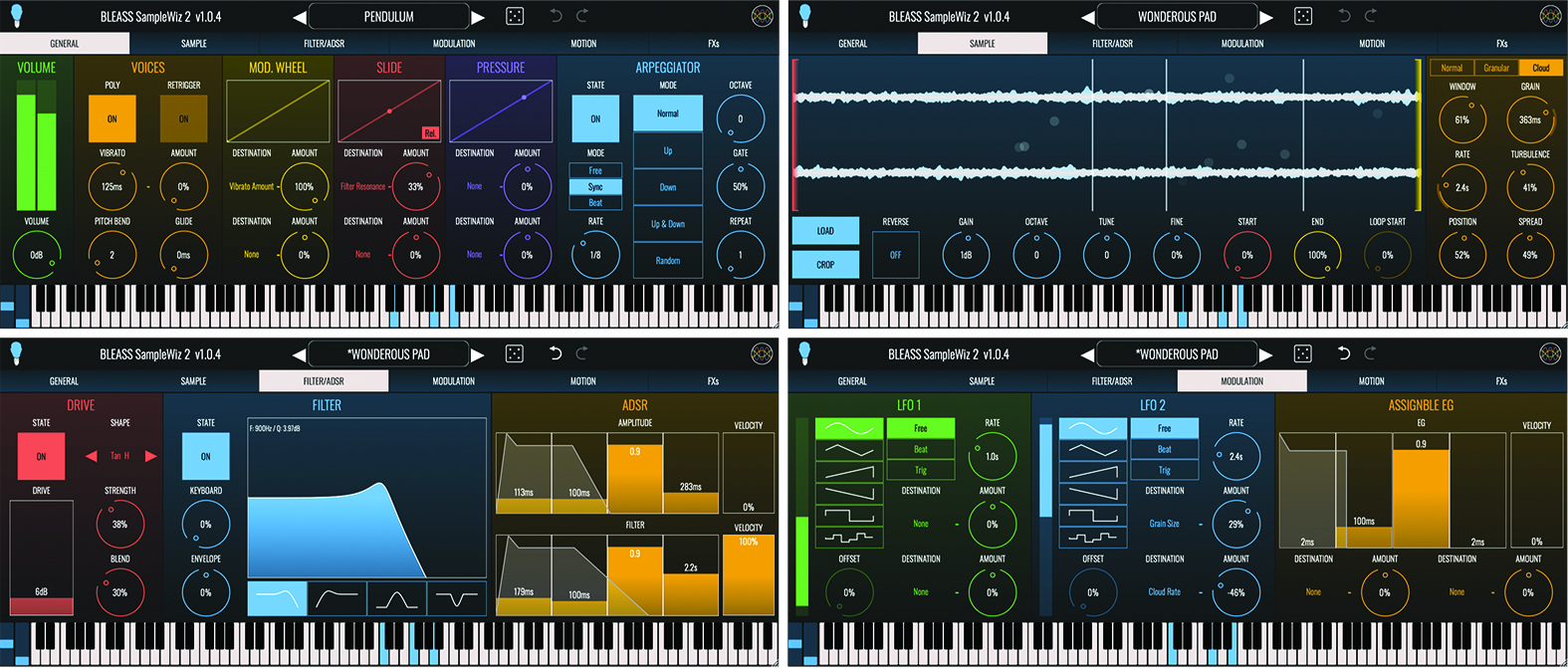MusicRadar Verdict
Focussing on creative sound design over hyper-accuracy, SampleWiz 2 rekindles the joy of making original playable instruments.
Pros
- +
Fast, creative workflow.
- +
Cloud engine is fantastic for pads.
- +
Overdrive processor ideal for extending harmonic complexity.
- +
Common patch file format (iOS/desktop).
Cons
- -
Lacks delay modulation.
- -
Not for hyper-realistic emulations.
MusicRadar's got your back
BLEASS SampleWiz 2: What is it?
Last year, BLEASS released the SampleWiz 2 sampler app and AUv3 plugin for iOS. The app and plugin were developed in partnership with world-renowned keyboardist Jordan Rudess, the brains behind the first incarnation of SampleWiz.
Now, BLEASS has released this same creativity-focussed sampler as a plugin for desktop-based hosts.
Unlike big sampling beasts such as Kontakt and HALion, with their multiple layers and articulations, a SampleWiz 2 patch is built from just a single sample.
Because of this, creating sounds with the plugin is more of an enjoyable creative process than the painstaking technical process of creating a detailed multi-sampled instrument would be.
In no time at all you can go from grabbing a sound to having an original and fully playable instrument.

BLEASS SampleWiz 2: Performance and verdict
The sample at the heart of a patch can be handled using one of three playback engines: Normal, Granular or Cloud.
The first of these is the common-or-garden affair you’d expect in any sampler, with pitch adjustment, basic or ping-pong looping and loop crossfading.

• Samplr for iOS
With layering, slicing, tape and scratch emulation, and more, this can handle your samples adeptly.
• Waves CR8
Inspired by hardware samplers, the affordable CR8 integrates directly with Waves’ Cosmos library.
In Granular mode, a short segment of the source sample – that is, a grain – is lifted from the playback position, looped, and pitch-shifted to the required note.
The playback position can move continually through the sample, the grain size can be adjusted and a randomising factor can be applied to the playback position, all of which can be used to create shifting timbres within the sound.
The Cloud playback engine uses the same concepts as Granular, with the difference lying in how playback progresses across the source sample: where the Normal and Granular engines can one-shot or loop across the sample, the Cloud engine defines a range within the sample and oscillates the playback position back-and-forth within this ‘window’.
This tends to produce a smooth, constant timbre that works pretty much perfectly as a sound-source for synthesis, and it can be particularly useful when you’re creating pad sounds.
Synth tools
On the synthesis side of things, SampleWiz 2 provides an overdrive processor, filter, delay and reverb effects, and a collection of modulators.
The overdrive and filter work well together, the former adding harmonic complexity that can be shaped and sculpted by the latter.
The filter itself is BLEASS’ standard unit with a choice of low-pass, high-pass, band-pass and notch modes, and it’s controlled using an intuitive visualisation of the filter curve that can be either touched or dragged in order to adjust cutoff and resonance settings.
The delay processor is useful if quite basic, but we think it would have benefited from modulation to allow chorus effects.
The reverb is more elaborate, with modulation of the reverb wash for a thicker sound, and an interesting shimmer effect – a pitch-shifted delay line that’s injected into the reverb.
Modulation matters
The plugin packs a pair of LFOs, three ADSR envelopes (two of which are hard-wired to amp and filter) and BLEASS’ Motion Sequencer, a step sequencer that outputs modulation values.
The plugin also handles mod wheel, MPE Slide and MPE Pressure signals as modulation sources, with the latter defaulting to standard MIDI Channel Pressure if it’s not connected to an MPE-capable controller.
With the exception of the hard-wired envelopes, all of these modulation sources can be mapped to two destination synth parameters.

iOS differences
Overall, this new desktop version of SampleWiz 2 is as close to the original iOS/iPadOS version as it’s possible to get, although some elements could not be translated.
The biggest difference is that the iOS version can record samples directly from the device’s built-in mic – if there’s a more perfect way of capturing some found sound samples we can’t think of it.
Furthermore, the iOS version takes advantage of touchscreen interactions in ways not possible with a mouse.
The on-screen keyboard can generate MPE Slide and Pressure messages, and has a Glide mode that lets you smoothly adjust note pitch by sliding your finger across the keys.
Similarly, the sample waveform visualisation can be used as a performance controller, letting you trigger and pitch notes, and change Granular/Cloud playback positions, by touching and stroking the waveform.
On the flip side, the SampleWiz 2 patch file format is identical across both versions, and can be shared easily using iCloud or AirDrop. So you can go out-and-about capturing samples on your iPhone, then transfer sounds to your desktop for further development.
Verdict
Overall, BLEASS’ overhaul of the original SampleWiz has resulted in a sampler and instrument that manages to blend the rapid, satisfying workflow of old-school hardware samplers with the most creative and expressive aspects of modern sample-wrangling technologies.
And while it may not let you make an achingly accurate emulation of a Bösendorfer piano, it’s certain to put a smile on your face!
MusicRadar verdict: Focussing on creative sound design over hyper-accuracy, SampleWiz 2 rekindles the joy of making original playable instruments.
BLEASS SampleWiz 2: The web says
"Sound designers will revel in the ease with which this sampler allows them to turn any humble sample into an entire suite of original, expressive and – most importantly – playable instruments."
MusicTech
BLEASS SampleWiz 2: Hands-on demos
BLEASS
HollywoodFloss1
BLEASS SampleWiz 2: Specifications
- Available for Mac and Windows, and iPhone and iPad.
- CONTACT: BLEASS
““We were arguing a lot and we were miserable”: How Green Day exceeded expectations with their most ambitious song
"There’s plenty for us guitarists to learn – and ‘less is more’ is the overriding lesson": how to play like George Harrison on The Beatles' Abbey Road
“They didn’t like Prince’s bikini underwear”: Prince’s support sets for the The Rolling Stones in 1981 are remembered as disastrous, but guitarist Dez Dickerson says that the the crowd reaction wasn’t as bad as people think










